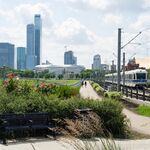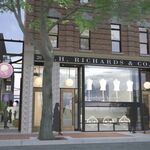Rutherford, Hamptons, Twin Brooks, South Terwillegar and Walker are all finished subdivisions, there is no longer any development occurring in these subdivisions. Summerside is down to its last few lots and Windermere still has a number of years left in development.
New subdivisions such as Maple, Aster, Edgemont, Cy Becker, etc. actually have zero to virtually zero luxury development. They are primilarily catered at average Edmontonian income.That is what I am trying to point out to you, you are referring to older subdivisions that had luxury product, the subdivisions of the last ~3-5 years are no longer that. It is not just condominiums and townhouses that are serving the first time buyer market, it is zero lot line single family homes that prior to the recent price uptick were sub $400k. This is not something that is possible to be replicated in the inner city unfortunately. You also bring up the example of Toronto, Toronto has hopped over its greenbelt into surrounding communities such as Brampton, Milton, Burlington, Ajax, etc. which would presumably occur here if the City of Edmonton does not maintain its balanced growth.




